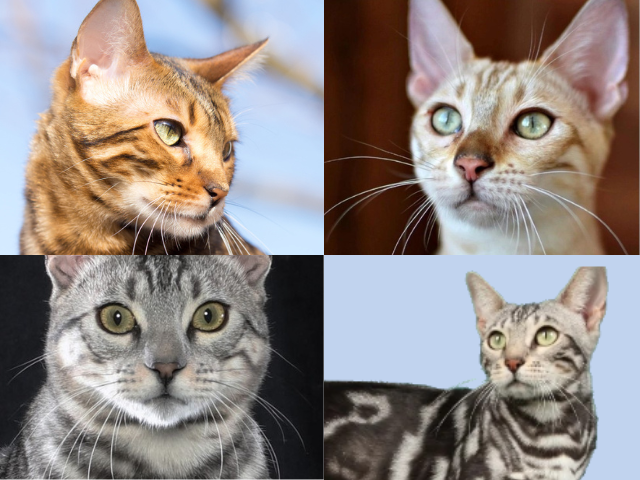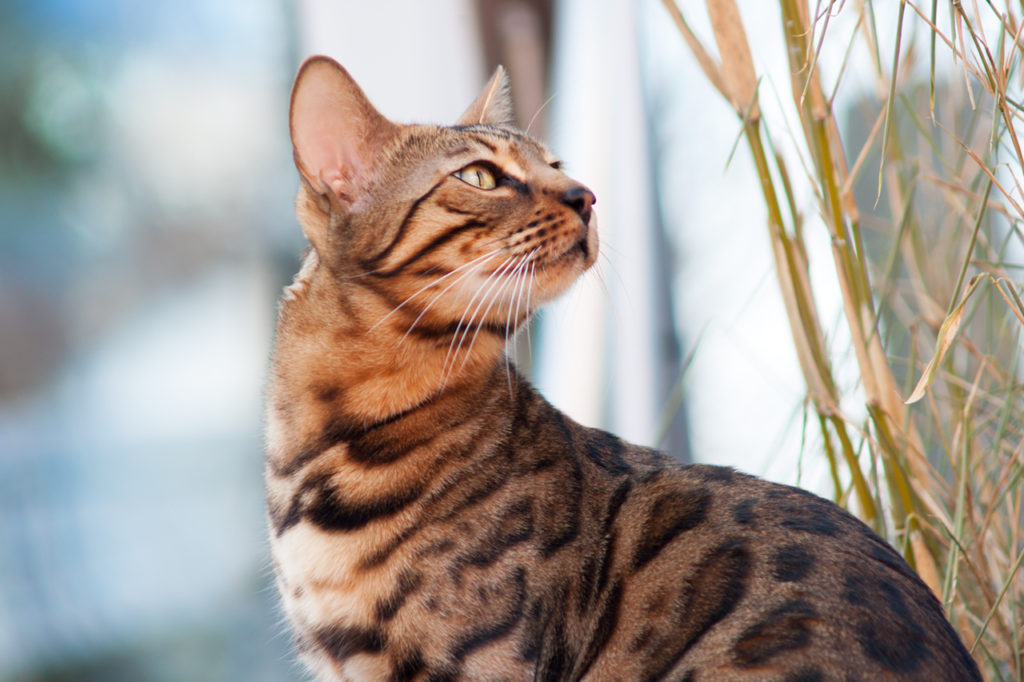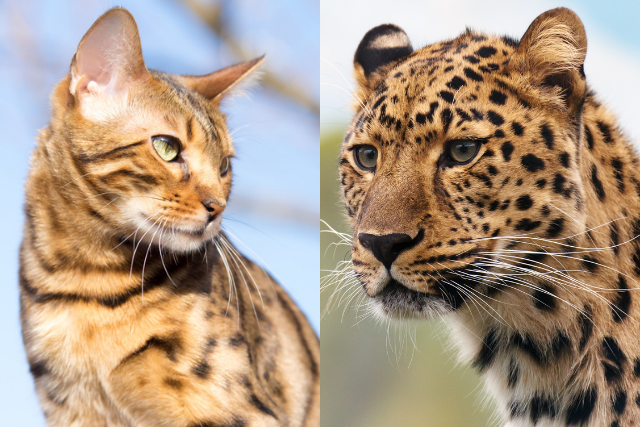Dive into the captivating world of feline allure with this exclusive guide to marbled Bengal cats.
Discover the secrets behind the creation, genetics, and enchanting patterns of these majestic creatures.
Uncover the mystique that makes marbled Bengals ideal companions for those seeking a perfect blend of wild elegance and domestic charm.
Ready for a feline adventure?
Topic Overview
As we navigate the realm of marbled Bengal cats, it’s essential to grasp the fundamentals.
From the inception of their intriguing genetics to the colours and patterns that adorn their sleek coats, this overview sets the stage for a comprehensive understanding of these exotic felines.
Let’s start with how they came to be…
How Marbled Bengal Cats Were Created
The creation of marbled Bengal cats can be traced back to the 1980s when breeders in the United States began crossing domestic cats with Asian leopard cats.
The goal was to create a domestic cat breed that had the exotic look of a wild leopard, but with a friendly and sociable temperament.
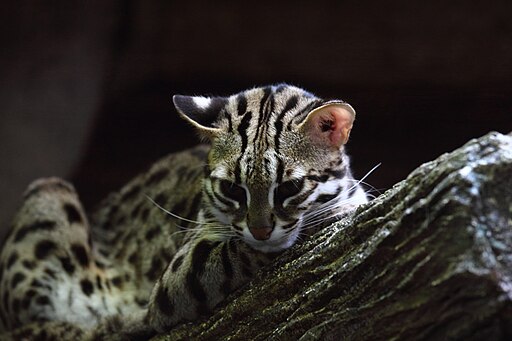
Image by paVan CC BY 2.0 via Wikimedia Commons
Through careful breeding practices, these early pioneers were able to develop the distinct marbled pattern seen in Bengal cats today.
This pattern is characterized by swirls and splotches of colour that resemble marble stone, giving these cats their unique and striking appearance.
They are effectively a sub-category of a ‘classic’ or ‘blotched’ tabby.
Breeders had to carefully select which traits they wanted to pass on from each parent cat in order to achieve the desired result.
Which brings us nicely onto genetics…
Marbled Bengal Cat Genetics
The most important gene involved in creating the marbled pattern is the agouti gene, which determines whether a cat’s fur will be banded or solid in colour.
The agouti gene in its dominant form is carried by marbled Bengals giving rise to the ‘tabby’ pattern- that is, marble Bengals are not one uniform colour, which they would be if this gene was not genetically dominant.
However, the allele/variant of the gene that codes for pattern (believed to be SP) is homozygous recessive in marbled Bengals– that is, it must have a copy of the gene from both mother and father in order for the physical characteristic(s) to be displayed.
In this case, it’s the swirl or marble-like pattern on the cat’s fur that gives them their characteristic appearance.
This pattern can vary greatly from cat to cat, with some having more defined swirls and others having a more subtle marbling effect.
Genes that control factors such as base coat colour, eye colour, and coat texture can all influence how the marbling pattern appears on an individual cat.
Breeding marbled Bengals requires careful selection of parent cats to ensure that desirable traits are passed down to offspring.
Breeders must consider not only the physical appearance of potential parents but also their genetic makeup to predict what patterns may appear in future litters.
Now onto discussing the marble pattern in more detail…
Marbled Bengal Patterns
Although marbled Bengals aren’t considered as desirable as their rosetted counterparts, it is from marble Bengals that the rosetted kind descended.
Marbled Bengal cat patterns are essentially made up of stripes that swirl and align horizontally.
There are four officially recognised Bengal cat marble types.
These are horizontal flow, reduced horizontal flow, sheet marble and the chaos pattern.
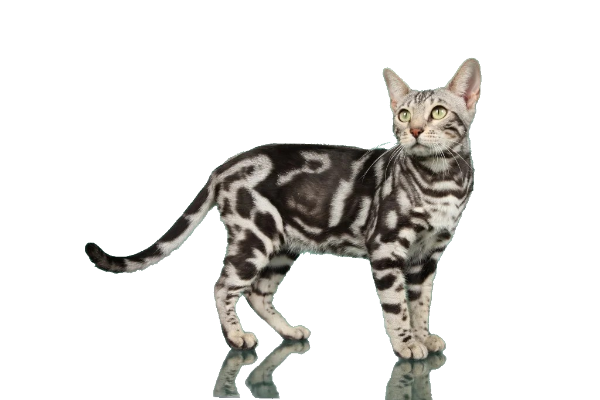
Swirls can consist of two or more colours from black, brown, gold, cream and rufus (a brownish red).
Swirls that flow vertically can give rise to an undesirable feature known as a ‘bullseye’ owing to its resemblance to the centre of a target.
The best show quality specimens will display a sharp contrast and definition in their markings, with distinct shapes and edges.
But what do you call a Bengal with both spots with marbles?
Sparble
Yes, there are Bengal cat types with this fur pattern.
Sparble Bengals display both rosettes and marble fur patterns to varying degrees.
They aren’t officially recognised (not that they’d care I imagine) and despite having both patterns, are considered to be spotted cats.
Let’s look at the array of different base coat colours you may come across…
Marbled Bengal Colours
Although there are only three officially accepted Bengal breed colours and their sub-categories, you may come across many more as breeding increases the pool.
Brown, silver and snow are the recognised Bengal cat coat colour types, but we will also discuss others including black and blue Bengals.
The following colours apply to both Bengal cats that are marbled and spotted/rosetted.
Brown
The Asian leopard cat crossed with domestic cat breeds gave rise to the brown Bengal.
Brown is the most prevalent of the Bengal cat colours and was the first to be recognised by TICA.
Of course brown is actually the umbrella term for fur colours that can be darker, lighter, redder or more golden.
You will see many brown Bengals with a white or ‘creamish’ underside as this a trait desired by breeders (and is also found in the Asian leopard cat).
Patterns, that is, spots/rosettes or marbles are much darker than the base fur colour and range from black to light brown.
Other features typical of the brown Bengal include:
- Golden/brown, green and hazel eyes
- A tail with a black tip
- A red/pink nose
Next up, snow Bengals…
Snow
Snow Bengals first came into being after a Siamese cat was introduced into a Bengal breeding program.
The Bengal gene pool has been enlarged further by adding some genetic information from Burmese cats.
This meant snow Bengals split into the 3 distinct types:
- Snow Seal Lynx
- Snow Seal Mink
- Snow Seal Sepia
Seal is a shade of brown- seal brown in effect.
Therefore ‘seal point’ means the cat has a solid shade of brown in ‘pointed areas’ (which is discussed below).
Snow Seal Lynx
Generally considered to have the whitest or palest fur of all the snow Bengals, the seal lynx Bengal is also referred to as the ‘Seal Lynx Point’.
The darker face, tail, feet and ears are features called pointing.
This trait was inherited from the Siamese breed, albeit in a less pronounced fashion.
The ‘Lynx Point’ part of the name refers to the fact that the ‘pointed’ areas on the cat’s body have tabby/striped markings.
Lynx Bengal kittens are born completely white, and only after a week or so do they start developing their contrasting darker colours.
After some months a kitten’s true and final colouring appears, and this can be a light brown/tan which can almost look orange around the nose.
Unique to the seal lynx snow Bengal is eye colour as it the sole owner of blue eyes.
Again, it has it Siamese genetic history to thank (or not if it doesn’t like them…)
Expect to find snow lynxes with a pink nose.
Instead of the Siamese, our next snow Bengal variant can attribute some its look from a different cat breed…
Snow Seal Sepia
The introduction of the Burmese lead to a specimen with a greater contrast in markings and base fur.
It is also considered to look most like the Snow Leopard.
This is because seal sepia snow isn’t pure white– and neither is a Snow Leopard.
Think about how a Snow Leopard’s coat will offer camouflage in a snowless, grey, brown rock-strewn environment.
Sepia’s have acquired the nickname ‘snow brown Bengals’ but neither are they truly brown- simply that little bit darker.
Instead, their base coats are cream, beige or light tan coloured with markings that are sepia brown or darker.
Sepia Bengal kittens display these marking from birth- hence this is a way of telling them apart from the snow lynx.
A sepia snow Bengal will have green or golden/orangey eyes and a light pinkish nose.
Our final snow variant is a bit of a melting pot…
Snow Seal Mink
The mink snow Bengal is quite literally a mix of the lynx Bengal and the sepia in that they carry BOTH the Burmese and Siamese genes.
In terms of colouration then, this typically puts this Bengal cat somewhere between the two.
Snow minks are darker than their seal lynx kin, but not as dark as the sepias.
Look out for a white, cream very light brown coat, with light brown markings that darken with age.
Mink Bengal kittens have a fur pattern visible from birth.
A seal mink snow will usually have blue-green/aqua eyes but they can also be gold.
Expect a mink Bengal to have a dark pink or reddish nose.
With brown and white covered, the last ‘official’ colour is silver…
Silver
Silver didn’t start appearing as a base coat colour in the Bengal cat breed until the 1990s.
It was introduced after a cross between a brown Bengal and a silver cat– believed to be an American Shorthair, although I have also seen an Egyptian Mau mentioned.
It’s important to note that the original brown colour in silvers is only inhibited (by an inhibitor gene) and not entirely removed.

This visible effect is called ‘tarnish.’
There are four main groups that come under the umbrella of ‘silver Bengal’- with one of these groups subdivided further.
Silver Snow
These are snow Bengals that carry the silver Bengal inhibitor gene mentioned earlier.
When young, it’s said to be hard to visually distinguish between a snow Bengal kitten and a silver snow.
But as they age, the silver/grey background fur of the latter becomes more distinct.
The snow variants then, if they carry the silver Bengal inhibitor gene become:
- Silver Seal Lynx
- Silver Seal Mink
- Silver Seal Sepia
They essentially have a similar look to snows, BUT with more of a grey/silver look to them.
Obviously.
Now from light to dark(er)….
Black/Melanistic
The Bengal cat equivalent of a panther would be the black or melanistic Bengal.
They are not truly black however as patterns, albeit still dark, can still be visible.
These marking are much harder to see and are therefore termed ‘ghost markings’.
Silver Bengals with black/melanistic colouring are called ‘Silver Smokes.’
Black Bengals are rare and not officially recognised.
Be warned as things are about to turn blue…
Blue
Blue Bengals are rare owing in part to the fact that the traits displayed by a blue Bengal are carried by a recessive gene– that is, both parents must carry it in order for the characteristics typical of blues to be seen.
These cats, as you would expect, have a bluey/grey coat with cream, beige or peach under tones.
Fur patterns consist of dark blue or grey colours.
Other features of note include:
- Gold, hazel or green eyes
- A tail with a dark grey tip
One may find silver blue Bengals, which have lighter undertones and understandably are more silver looking.
Now as Amy Winehouse once sang, it’s back to black… well charcoal…
Charcoal
The charcoal trait is passed down independently of colour.
This means you can find it in browns, silvers, snows and blues.
It can be hard to distinguish between charcoal and black/Melanistic Bengals.
This is because charcoal patterns can very closely match background fur making charcoals appear as having only one solid colour.
Charcoal Bengals have a unique element of patterning- the ‘Zorro mask and cape’ (like the silver charcoal below).
These are a black face ‘mask’ which leads into an equally dark ‘cape’ running along the back. Sword not included.
Other features include a dark, black tipped tail with stripe patterns.
Having covered colouring, there are some other coat features you may come across when looking at Bengal cat types.
Marbled Bengal Personality
Marbled Bengals- like all Bengals, are known for their playful, affectionate, and energetic nature.
Marble Bengal kittens especially, love to play and explore, and they thrive in an environment where they can exercise both their bodies and minds.
This means providing plenty of toys, climbing structures, and interactive games to keep them entertained.
Despite their active nature, marbled Bengals are also quite affectionate and can form strong bonds with their human family members and enjoy being involved in all aspects of household life.
They are often described as “dog-like” in their loyalty and devotion to their owners.
In addition to being playful and loving, marbled Bengals are also highly intelligent cats.
They can be trained to perform tricks, solve puzzles, and even walk on a leash.
Marbled Bengal cats share typical personality traits with their spotted counterparts and also size…
How Big Do Marbled Bengal Cats Get?
A marble Bengal cat size wise will typically be at the larger end of the domestic cat spectrum.
Most adult Bengal cats weigh between 6-15lbs (2.7-6.8kgs), but some specimens have been known to reach the 20lb (9kg) plus mark.
Expect a Bengal cat length of up to 18 inches (45.7cms) for fully grown adults (excluding the tail).
A Bengal cat height (that is, based on what I could find, from the base of front paw to top of the head- ignoring ears) is around 15 inches (38cms).
Thinking of buying a marbled Bengal cat? Then you’ll want some idea of what you can expect to pay…
How Much Do Marbled Bengal Cats Cost?
These cats are highly sought after for their exotic appearance and playful personalities, but they also come with a hefty price tag.
Marble Bengal cat prices can vary depending on several factors including the breeder, pedigree, age, and quality of the cat.
You can expect to pay anywhere between $700 to $5000 for a marbled Bengal kitten from a reputable breeder.
However, some high-quality show or breeding quality marble Bengals can fetch prices upwards of $5000.
Adult marble Bengal cats will usually be for sale at a much lower cost.
It’s important to do your research and find a reputable breeder when looking to purchase a marble Bengal cat to ensure that you are getting a healthy, well-socialized kitten.
Be wary of so-called ‘backyard breeders’ offering marbled Bengal cats at extremely low prices as this could be a red flag for unhealthy or improperly bred kittens.
So just how easy are marbled Bengals to find..?
Are Marbled Bengals Rare?
In the world of Bengal cats, marbled Bengals are rarer than their more common counterpart, the spotted Bengal.
This is because the marbling gene is not as dominant as the spotting gene in Bengal cats, making marbled Bengals less common.
Let’s now explore the difference between a marbled tabby and a Bengal…
What Is the Difference Between A Marbled Tabby And A Bengal?
When it comes to marble Bengal vs tabby cats, the main differences lies in their patterns.
The traditional classic tabby pattern is characterised by a ‘bullseye’ shape along the cat’s side, with solid black shoulder markings and the recognizable tabby ‘M’ above the eyes- which is often mistaken for a Bengal characteristic.
The marble Bengal pattern distinguishes itself through differences in both marking coloration and arrangement.
While a traditional tabby exhibits solid markings, Bengal markings are two-toned, displaying black and various shades of brown rippling within the black markings.
The marble Bengal’s bullseye should be elongated and broken, eliminating the round bullseye characteristic.
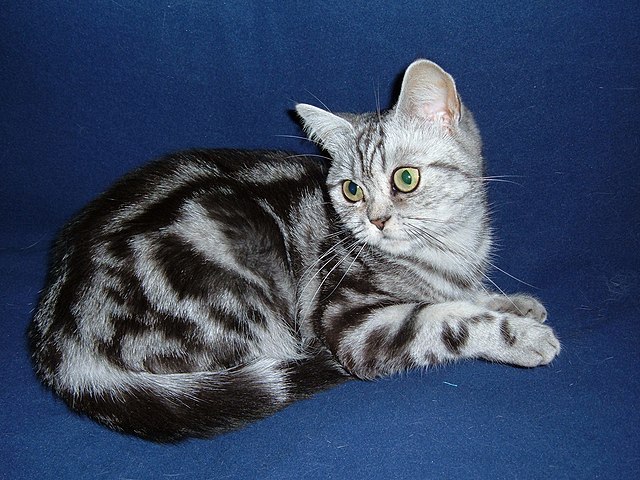
Image by Kattefreakske CC by 3.0 via Wikimedia Commons
Smaller black markings may also appear within the brown colouring.
This unique colour interplay results from the interaction of leopard cat genetics with a tabby gene not typically encountered in nature.
The more the pattern resembles the traditional tabby, the less desirable it is for marble Bengal cats.
Finally, we look at marbled Bengals in terms of their suitability as pets…
Do Marbled Bengal Cats Make Good Pets?
Below are some reasons why marbled Bengal cats’ personalities and traits make them great pets for the right owner:
1. Intelligent and Energetic: Marbled Bengals are highly intelligent and active cats. They love to play, climb, and explore their surroundings. They require plenty of mental stimulation and physical exercise to keep them happy and healthy.
2. Affectionate: Despite their wild appearance, marbled Bengals are affectionate and loving towards their human companions. They (can) enjoy cuddling up with their owners and receiving attention.
3. Social: Marble Bengal cats are social creatures that thrive on interaction with people or other animals in the household. They enjoy being part of the family activities and will often follow you around the house.
4. Low Maintenance Grooming: The short coat of a marbled Bengal cat is easy to groom, requiring only occasional brushing (if at all) to remove loose hair.
If you’re considering adding a marbled Bengal cat to your family, be sure to do thorough research on the breed’s specific needs and characteristics before making a commitment- and talk to a breeder.
It’s also important to remember these are common traits and may not be true of every individual.
My Bengal, Hazel, for example, likes to cuddle up, but usually only in winter. I think we can all work out why that is…
Summary
Marbled Bengal cats are both unique and striking with the ability to captivate those who encounter them.
Their stunning Bengal marble coat patterns, playful personalities, and intelligence make them a popular choice for cat lovers around the world.
Whether you are considering acquiring a marble Bengal kitten or simply admiring their beauty from afar, marbled Bengals are sure to leave a lasting impression with their exotic appearance and charming demeanour.
Further Reading:
Resources:
My thanks to Diane from ValleyKatz Bengals for allowing use of the silver marbled Bengal image used in this article

